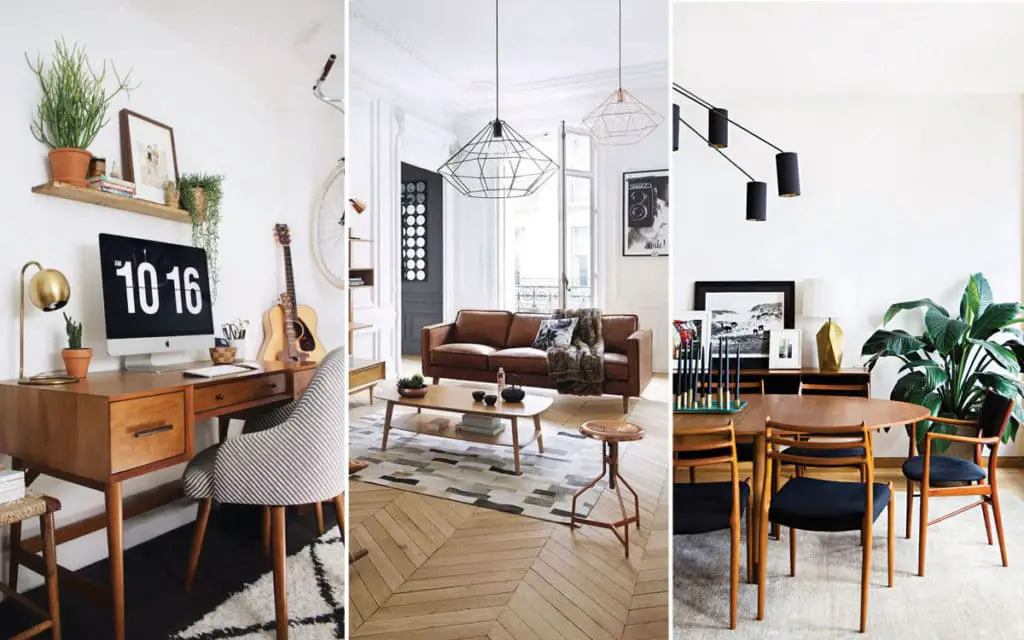Introduction
Mid-century modern design is a style that emerged in the mid-20th century, specifically from the mid-1940s to the late 1960s. It is characterized by clean lines, organic curves, and an emphasis on functionality. This design aesthetic has seen a resurgence in recent years, with mid-century modern chairs becoming particularly popular. Their timeless appeal and versatility make them a favorite choice for interior decorators and homeowners alike. This article explores the enduring charm of mid-century chairs and provides practical tips on how to incorporate them into your home decor.
Understanding Mid-Century Chair Design
Mid-century modern chairs are iconic pieces that blend form and function. They are known for their minimalist design, which often features:
- Clean Lines: Mid-century chairs often have simple, straight lines without excessive ornamentation. This design philosophy focuses on the essence of the form, avoiding unnecessary decoration.
- Organic Shapes: Despite the emphasis on clean lines, mid-century chairs also embrace organic and flowing shapes, often inspired by nature. These curves add warmth and softness to the design.
- Functional Design: Mid-century chairs are designed to be practical and comfortable. The focus is on usability and comfort, with ergonomic designs that cater to the human form.
- Innovative Materials: The mid-century era was marked by experimentation with new materials such as molded plywood, fiberglass, and plastic. These materials allowed designers to create unique shapes and styles that were not possible before.
- Wood and Metal Accents: While innovative materials were popular, traditional materials like wood and metal were also prominently used. The combination of different materials often resulted in striking contrasts and unique aesthetics.
Popular Mid-Century Chair Styles
Several iconic chair styles emerged during the mid-century era, each with its own unique features and design principles:
Eames Lounge Chair
Designed by Charles and Ray Eames in 1956, the Eames Lounge Chair is one of the most recognizable mid-century modern chairs. It combines luxury and comfort with its molded plywood frame and leather upholstery. The chair’s ergonomic design and timeless style make it a perfect addition to both contemporary and traditional spaces.
Tulip Chair
Designed by Eero Saarinen in 1955, the Tulip Chair is known for its futuristic and minimalist design. It features a single pedestal base instead of traditional chair legs, creating a sleek and streamlined appearance. The Tulip Chair is often used in dining rooms and kitchens to add a touch of elegance and modernity.
Wishbone Chair
Created by Danish designer Hans Wegner in 1949, the Wishbone Chair is a masterpiece of craftsmanship. Its distinctive Y-shaped backrest and woven seat provide both comfort and support. Made primarily from wood, the Wishbone Chair adds a natural and organic feel to any room.
Egg Chair
Designed by Arne Jacobsen in 1958, the Egg Chair is an iconic piece that combines modernity with comfort. Its unique shape envelops the sitter, creating a cozy and private space. The Egg Chair is often used as a statement piece in living rooms and lounges.
Incorporating Mid-Century Chairs into Your Decor
Integrating mid-century chairs into your home decor can add style and sophistication. Here are some tips on how to do it effectively:
1. Identify Your Style
Before incorporating mid-century chairs into your decor, identify your existing style. Mid-century chairs can complement a variety of aesthetics, including:
- Modern: Mid-century chairs naturally fit into modern spaces with their clean lines and minimalist design.
- Eclectic: These chairs can add a touch of vintage charm to eclectic interiors with mixed styles and textures.
- Traditional: Mid-century pieces can create an interesting contrast in traditional settings, adding a contemporary twist.
2. Mix and Match
Don’t be afraid to mix different mid-century chair styles within the same space. Combining various designs can create a dynamic and visually interesting environment. For instance, pair an Eames Lounge Chair with a Tulip Chair to balance luxury with modern elegance.
3. Choose the Right Materials
Consider the materials of the chairs and how they complement your existing decor. If your space has a lot of wood accents, opt for mid-century chairs with wooden frames to maintain a cohesive look. For a more contemporary feel, choose chairs with metal or fiberglass elements.
4. Focus on Functionality
While aesthetics are important, don’t forget about functionality. Choose mid-century chairs that suit the specific needs of your space. For example, a Wishbone Chair is ideal for dining areas, while an Egg Chair can be perfect for creating a cozy reading nook.
5. Use Chairs as Focal Points
Mid-century chairs can serve as statement pieces in your decor. Highlight their unique design by placing them in prominent areas of your home. An Eames Lounge Chair, for example, can become the focal point of a living room or study.
6. Experiment with Color and Upholstery
Mid-century chairs often come in a variety of colors and upholstery options. Consider experimenting with bold colors to add a pop of interest to your space. Alternatively, choose neutral tones for a more understated look that allows the chair’s design to take center stage.
Conclusion
Mid-century modern chairs are more than just functional pieces of furniture; they are works of art that embody the design principles of a bygone era. Their timeless appeal and versatility make them a perfect addition to any home, regardless of style. By understanding the characteristics of mid-century chair design and following the tips outlined in this article, you can seamlessly incorporate these iconic pieces into your decor. Whether you’re a fan of the classic Eames Lounge Chair or the futuristic Tulip Chair, mid-century chairs offer endless possibilities for enhancing your living space with style and sophistication.
Incorporating mid-century chairs into your decor not only adds aesthetic value but also pays homage to a design era that continues to influence contemporary interiors. By blending these iconic pieces with your personal style, you can create a space that is both timeless and uniquely yours.


